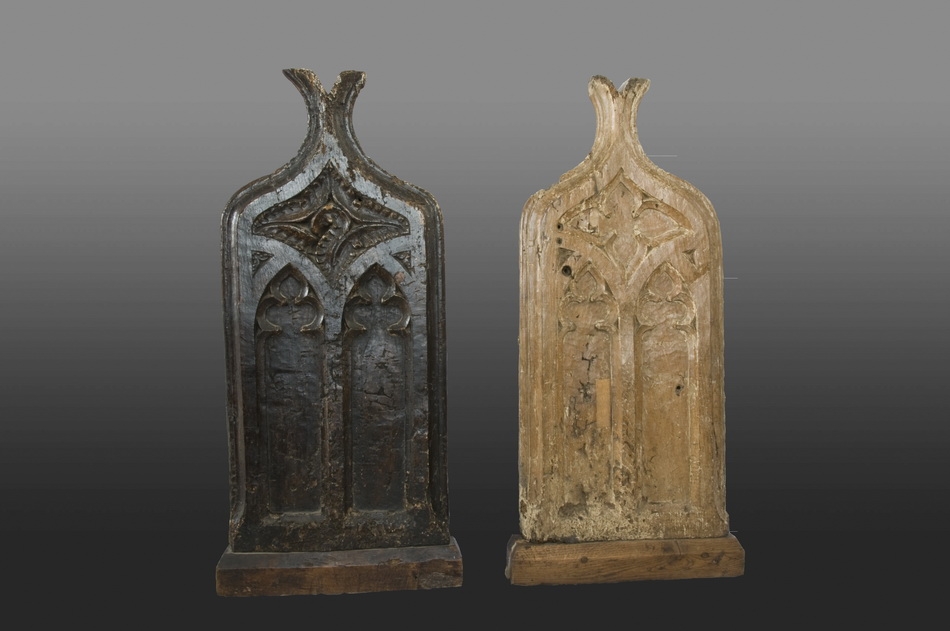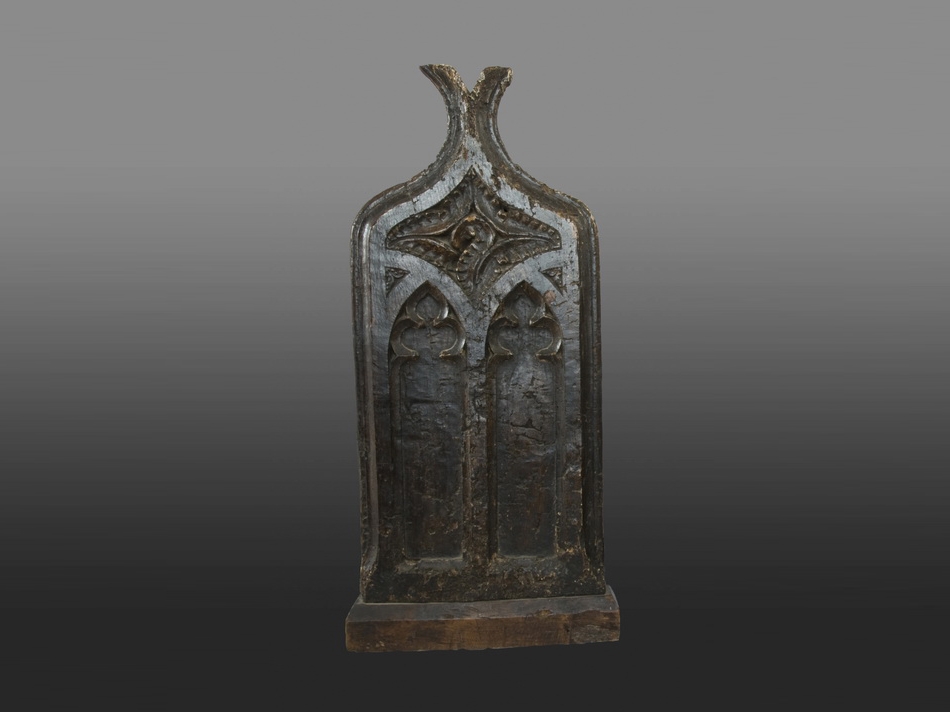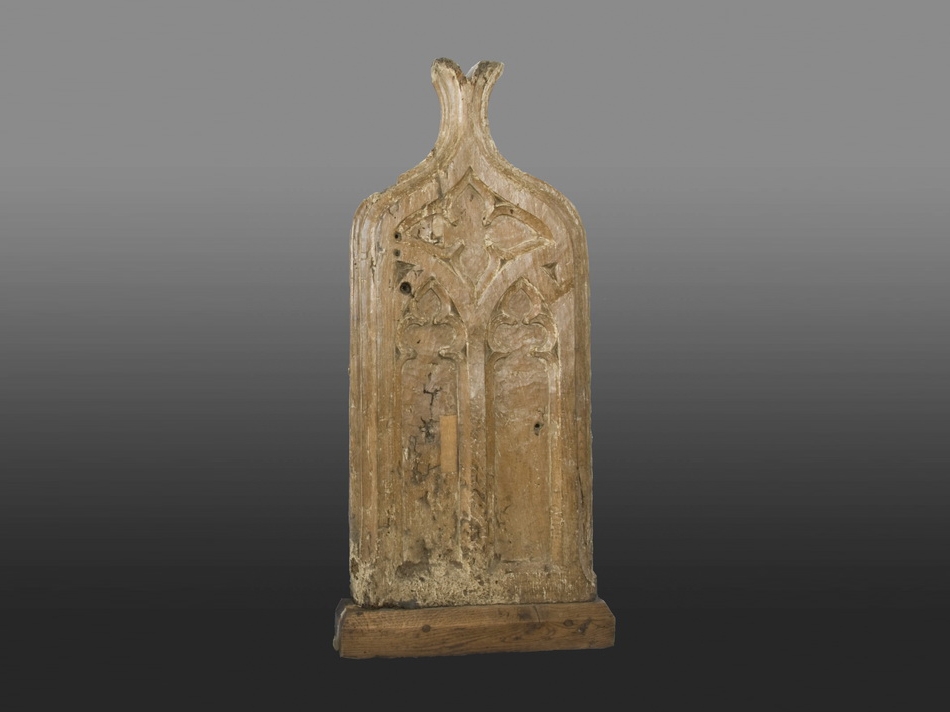Late medieval carved bench ends
Late medieval
Somerset, England
W 18" × H 43" × D 3"
Stock # marh0402
SOLD
Late medieval carved bench ends from Mid Somerset. These benchends were recovered from St Mary the Virgin, Stoke Sub Hamdon., a small Norman church located outside Martock, Somerset. Their distinctive structural configuration is found only on benchends in Mid and North Somerset. Instead of the stand rectilinear form of West Country benchends, the upper section of these and related benchends are drawn upwards to form a reverse tapered terminal – not unlike the ‘poppy heads’ found on most East Anglian benchends. A closely related benchend attributed to North Somerset is in the collection of the Victoria & Albert Museum and is illustrated in Charles Tracy, English Medieval Furniture and Woodwork (London: Victoria & Albert Museum, 1989), p. 115, cat. 199. Both of the Stoke sub Trent benchends are carved with a horizontally elongated quatrefoil above two trefoil-headed lancets. One of the benchends is further embellished with stylized foliage filling the quatrefoil and the small triangular voids flanking the lancets. The additional elaboration indicates that this benchend was originally positioned towards the front of the nave and nearer to the sacral and social benefits conveyed by the physical proximity of the ritual of Mass. The more affluent late medieval parishioners often purchased rights to seating at the front of the nave. These laymen and -women often also paid for the application of additional carving to their benchends. The extra ornament that appears on lead benches reflects familial or occupational identity or personal aesthetic preference, conveying the social distinction of the parishioners who occupied them. The simpler of the two benchends likely represents the standard pattern and was probably located in the middle of the nave – benchends at the rear of the nave were probably uncarved.
One benchend with early dark-stained surface; the other with traces of vermillion undercoating from original polychromy.
Minor patches and sporadic insect damage; mounted on later stands.


